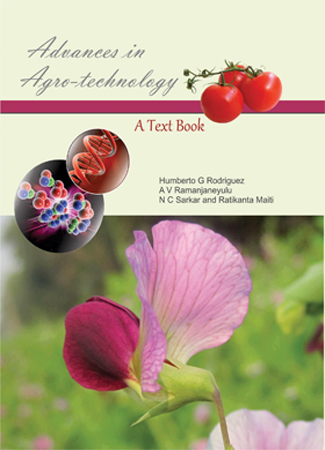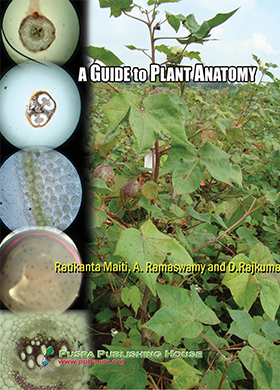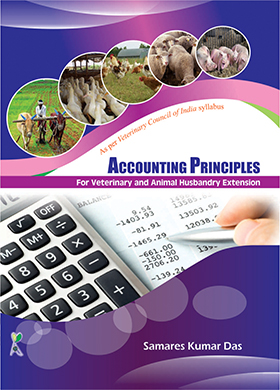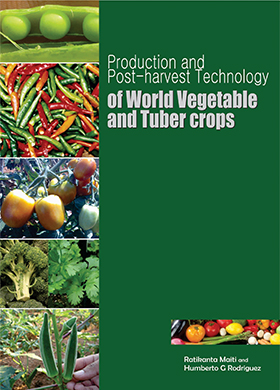Full Research
Standardization of Fertilizer Application through Drip System as Compared to Conventional Method of Basin Fertigation in Orange
Pramod Kumar, Anuradha Sinha, Swapnil, Suman Lata and Digvijay Singh
- Page No: 025 - 028
- Published online: 28 Feb 2021
- DOI: HTTPS://DOI.ORG/10.23910/2/2021.0408a
-
Abstract
-
anuanjali92@yahoo.com
Orange (Citrus sinensis) is important tropical or sub-tropical fruit crop which belong to family Rutaceae having chromosome number 2n= 2x=18 which contains vitamin C, fiber and several phytochemical compounds. Citrus sinensis has evergreen and perennial in nature. Because of perennial nature it requires water and nutrients all over the year for their greater yield and productivity. A study was undertaken to determine the quantity of fertilizer application through drip system as compared to conventional method of basin fertigation in orange during kharif season of 2014, on Nagpur variety of orange at Agricultural Engineering at ZRS, Chianki, Palamau district in Jharkhand, India. There were total four treatments combination was applied namely Treatment 1- V volume of water by drip +100% fertilizer (N), Treatment 2- V volume of water by drip+80% fertilizer (N), Treatment 3- V volume of water by drip+60% fertilizer (N) and Treatment 4- V volume of water by basin irrigation+100% fertilizer by soil incorporation (N) and it was found that 100% application of fertilizer through drip system show best result for all the observation such as maximum FUE (0.0059 q ha-1 INR-1), plant girth (28.4 cm) and plant spread (EW-290.1, NS-263), WUE (0.56 q ha-1 cm-1), fruit weight (79%), fruit yield (38.4 q ha-1), net seasonal income (99866) and maximum Net B.C ratio. This may be due to vegetative growth, fruit yield, fruit weight and quality of fruit which fetches more lucre in market as compared to conventional method of basin fertigation which is useful for farmers.
Keywords : Citrus sinensis, drip irrigation, fertigation, standardization
-
Introduction
Citrus sinensis, commonly known as Orange, is an important tropical or sub-tropical fruit crop. Citrus fruits contain vitamin C, fiber, phytochemical compounds like liminoids, hesperidin, flavonoid, polyphenols and pectin that cause has high medicinal value. Citrus fruit helps to decrease inflammation, improve gastrointestinal function and health. Fruit and their by-products are of high economic importance because of their use within the food industry, cosmetics and folk medicine. citrus are the third largest grown fruit crops after mango and banana in India. In India Citrus sinensis are cultivated in the area of 4,37,000 hectares with the production of 53,80,000 MT (NHB, 2019). In the country citrus fruits are growing in Andhra Pradesh, Maharashtra, Punjab, Madhya Pradesh and Gujarat.
Citrus sinensis is evergreen and perennial in nature, hence requires water and nutrients all the year for greater yield and productivity. Water is a limiting resource in the Citrus sinensis fruit production (Kumar et al., 2020). Nutrient management is also an important aspect for crop productivity and quality of crops (Goramnagar et al., 2017). The deficiency of water and nutrient in any phase of the crop reduced the yield and quality. In citrus, generally water and nutrient are given through conventional sources that cause loss of nutrient from root zone, contamination of water and also had lower water use efficiency. To beat these problems, drip irrigation may be a best alternative approach. Drip irrigation or micro-irrigation or trickle irrigation, apply water to the root-zone of the plants in the form of droplet. This method generally uses less than half the water, had higher water use efficiency and reduces surface evaporation loss as compared to conventional irrigation system. Adoption of drip irrigation system increases the water use efficiency up to 95% and also maintain higher yield (Pattanaaik, 2017). Reduce incidence of the many disease infestation by applying water directly into the rhizosphere. Drip irrigation also helps in fertilizer application in the form of fluid or dissolvable composts through dribble water system can supplant soil application. Fertigation saves fertilizer because it permits application of fertilizer in small quantities near the plants root as per the need of nutrient thus; fertigation helps in improving the yield and quality of citrus fruit. In addition, it is considered as eco-friendly as it avoids leaching of fertilizers. The knowledge of precise nutrient and water requirement is essential for improved water and nutrient use efficiency for avoiding excess use of water and fertilizer. Hence current study was carried out to find out to determine the quantity of fertilizer application through drip system as compared to conventional method of basin fertigation in orange.
-
Materials and Methods
The experiment was conducted during kharif season of 2014, on Nagpur variety of orange with the spacing of 5×5 m2 at Agricultural Engineering at ZRS, Chianki, Palamau district in Jharkhand, India with the latitude is 24.013031 and the longitude is 84.106566. There were total four treatments combination was applied namely T1: V volume of water by drip +100% fertilizer (N), T2: V volume of water by drip + 80% fertilizer (N), T3: V volume of water by drip+60% fertilizer (N) and T4: V volume of water by basin irrigation +100% fertilizer by soil incorporation (N). The experiment was laid out in randomized block design (RBD) design having five replications. Irrigation was given to orange as per treatments like basin Irrigation at 10 days interval and through drip irrigation at 2 days interval. As per the treatments water soluble fertilizer grade (N: P: K- 500 g : 150 g : 300 g plant-1) were applied. The basal dose of phosphorus and potassium were fully applied, while nitrogen was supplied in 12 splits dose through urea. All the observations i.e. quantity of water applied, Plant height, plant spread – N-S & E-W, plant girth, yield plant-1 ha-1, Fertilizer use efficiency, Grading of fruit were recorded for the study. Mature fruits plant-1 were harvested periodically from each treatment and weight was recorded and expressed in kg. Further, fruits ha-1 was calculated by multiplying the fruit yield plant-1 to the no. of plants ha-1. The relative economics of Orange cultivation under different treatments were also calculated. The data obtained on various characters were subjected to randomized block design analysis and interpretation of the data was carried out in accordance to Panse and Sukhatme (1985).
-
Results and Discussion
Out of 4 treatment, treatment T1- V volume of water by drip+100% fertilizer (Table 1, Figure 1) showed significantly superior over rest of treatments in terms of plant girth (28.4 cm) and plant spread (EW-290.1, NS-263) followed by T2, T3 and T4.
This might be due to sufficient soil moisture along with NPK application through fertigation led to increased photosynthetic rate, cell and tissue growth accompanied with better nutritional environment in the rhizosphere for the growth and development of the plant. Thus, growth of plants with respect to height, girth and plant spread also proportionately increased. These finding were also observed by Taru et al. (2020) in acid lime, Sinha et al. (2019) in Kinnow mandarin, Kumar et al. (2013), Bidhan (2013) and Jeyakumar et al. (2010).
Maximum FUE (0.0059 q ha-1 INR-1) (Table 1) was observed with treatment T1 and T2 where as minimum FUE observed in (0.0009 q ha-1 INR-1) in T4. Maximum WUE was recorded in treatment T1 (0.56 q ha-1 cm-1) and lowest WUE was recorded in treatment T4 (0.06 q ha-1 cm-1). The lowest fertilizer use efficiency and WUE in treatment T4 was might be because of non-uniform supply and insufficient availability of fertilizer and humidity around the rhizosphere of an orange which was responsible for lesser uptake of nutrients and water. These results were also reported by Raza et al. (2020), Ramniwas et al. (2013) in guava, Kumar et al. (2009) in banana and Sharma et al. (2008) in grape.
Data from Table 2, Treatment T1 show maximum fruit weight (79%), fruit yield (38.4 q ha-1) whereas V volume+80% fertilizer (N) and V volume of water by drip+60% fertilizer (N) also showed significant effect as compared to V volume of water by basin irrigation+100% fertilizer by soil incorporation (6.1 q ha-1). This might be due to overall vegetative growth and biological efficiency of the plant which have finally leads to the enhancement in fruit weight, yield. Similar findings were observed by Taru et al. (2020) in acid lime, Lakashmi et al. (2019) in sweet orange, Panigrahi and Srivastava (2017), Kumar et al. (2013), Castellanosa et al. (2013) and Sujatha et al. (2006). Figure 2 showing comparative yield of T1 (Drip+100% N) and T4 (control).
From economic point of view shown in Table 3, the utmost net seasonal income (INR 99866) and maximum Net B.C ratio found in treatment (T1) i,e. V volume of water+100% fertilizer (N) i.e. 4.34 is most economical as compared to rest of treatment where minimum net seasonal income and minimum Net B.C ratio found in treatment T4. Similar, findings were reported by Panigrahi and Srivastava (2011). This could be because of better development and maturation of fruit. The well-developed fruit gives the good price with low cost under fertigation (Singh et al., 2006).
-
Conclusion
On the premise findings, it might be concluded that 100% application of fertilizer through drip system in orange enhances expression of different growth stage and thus in increasing fruit yield, fruit weight and quality of fruit which fetches more lucre in market as compared to conventional method of basin fertigation which is useful for farmer.
Table 1: Biometrical and yield parameters of orange crop under different treatments
Figure 1: Graph depicting parameters of orange under different treatments
Table 2: Fruit weight and yield of different treatment of orange cultivation
Figure 2: Comparative yield of T1 (Drip+100% N) and T4 (control) of orange cultivation
Table 3: Economics of orange cultivation under different treatments
Table 1: Biometrical and yield parameters of orange crop under different treatments
Figure 1: Graph depicting parameters of orange under different treatments
Table 2: Fruit weight and yield of different treatment of orange cultivation
Figure 2: Comparative yield of T1 (Drip+100% N) and T4 (control) of orange cultivation
Table 3: Economics of orange cultivation under different treatments
Table 1: Biometrical and yield parameters of orange crop under different treatments
Figure 1: Graph depicting parameters of orange under different treatments
Table 2: Fruit weight and yield of different treatment of orange cultivation
Figure 2: Comparative yield of T1 (Drip+100% N) and T4 (control) of orange cultivation
Table 3: Economics of orange cultivation under different treatments
Table 1: Biometrical and yield parameters of orange crop under different treatments
Figure 1: Graph depicting parameters of orange under different treatments
Table 2: Fruit weight and yield of different treatment of orange cultivation
Figure 2: Comparative yield of T1 (Drip+100% N) and T4 (control) of orange cultivation
Table 3: Economics of orange cultivation under different treatments
Table 1: Biometrical and yield parameters of orange crop under different treatments
Figure 1: Graph depicting parameters of orange under different treatments
Table 2: Fruit weight and yield of different treatment of orange cultivation
Figure 2: Comparative yield of T1 (Drip+100% N) and T4 (control) of orange cultivation
Table 3: Economics of orange cultivation under different treatments
-
Bidhan, C., 2013. Evaluation of water regime and fertigation on growth, yield and economics of sweet orange (Citrus sinensis Osbeck) cv. MOSAMBI. The Asian Journal of Horticulture 8(2), 709−713.
Castellanosa, M.T., Tarquis A.M., Ribas F., Cabello, M.J., Arced, A., Cartagena, M.C., 2013. Nitrogen fertigation: An integrated agronomic and environmental study. Agricultural Water Manage 120, 46−55.
Goramnagar, H.B., Nagare, P.K., Bharad, S.G., Sonune, B.A., Raut, R.F., 2017. Effect of chemical fertilizer through fertigation and micro-irrigation on fruit yield and nutrient use efficiency in acid lime of semiarid climatic conditions of Maharashtra. International Journal of Chemical Studies 5(6), 31−35
Jeyakumar, P., Amutha, A., Balamohan, T.N., Auxcilia, L., Nalina, 2010. Fertigation Improves Fruit Yield and Quality of Papaya. Acta Horticulturae, 851−856
Kumar, A., Kumar, A., Singh, H.K., Kumari, N., Kumar, P., 2009. Effect of fertigation on banana biometric characteristics and fertilizer use efficiency. Journal of Agricultural Engineering 46, 27–31
Kumar, H., Yadav, P.K., Singh, A.K., Sharma, S.K., 2013. Evaluation of water regime and fertigation on growth, yield and economics of sweet orange (Citrus sinensis Osbeck) cv. Mosambi. The Asian Journal of Horticulture 8(2), 709−713.
Kumar, S., Kumawat, P., Choudhary, K., 2020. Irrigation Scheduling and Fertigation in Citrus Fruit Crops. Chemical Science Review and Letters 9(34), 418−424.
Lakashmi, L.M., Venkataramana, K.T., Shirgure, P.S., Srivastava, A.K., Patil, P., 2019. Integrated water and nutrient management in Sathgudi sweet orange (Citrus sinensis). Indian Journal of Agricultural Sciences 89(11), 1932−1936
NHB, 2019. Horticultural statistics at a glance. NHB, Government of India, Ministry of Agriculture and Farmers Welfare Department of Agriculture, Cooperation and Farmers, Welfare Directorate of Economics and Statistics
Panigrahi, P., Srivastava, A.K., 2011. Deficit irrigation (DI) scheduling for matured Nagpur mandarin (Citrus reticulate Blanco) trees of central India. Indian Journal of Soil Conservation 39(2), 149−154.
Panigrahi, P., Srivastava, A.K., 2017. Water and nutrient management effects on water use and yield of drip irrigated citrus in vertisol under a sub-humid region. Journal of Integrative Agriculture 16, 1184–1194.
Panse, V.G., Sukhatme, P.V., 1985. In: Statistical methods for Agriculture workers. ICAR, New Delhi, 145–155.
Pattanaaik, S.K., 2017. Response of drip irrigated banana to different irrigation regimes. In: Micro irrigation scheduling and practices, Volume 7, Taylor and Francis Publishing. Pp. 85−98.
Ramniwas, Kaushik, R.A., Pareek, S., Sarolia, D.K., Singh, V., 2013. Effect of drip fertigation scheduling on fertilizer use efficiency, leaf nutrient status, yield and quality of ‘Shweta’ Guava (Psidium guajava L.) Under Meadow Orcharding. National Academy Science Letters 36(5), 483−488.
Raza, A., Zaka, M.A., Khurshid, T., Nawaz, M.A., Ahmed, W., Afzal, M.B.S., 2020. Different irrigation systems affect the yield and water use efficiency of Kinnow mandarin (Citrus reticulata Blanco.). The Journal of Animal & Plant Sciences 30(5), 1178−1186.
Sharma, J., Upadhyay, A.K., Shikhamany, S.D., Singh, R.K., 2008. Effect of fertilizer application through irrigation water on Thompson seedless grape yield and fertilizer use efficiency. Acta Horticulturae 785, 399–408.
Singh, P., Singh, A.K., Sahu, K., 2006. Irrigation and fertigation of pomegranate cv. Ganesh in Chhattisgarh. Indian Journal of Horticulture 63(2), 148−151.
Sinha, S., Kumari, K., Prasad, M., Singh, G., Mankar, A., Ahmad, M.F., 2019. Growth and yield of Kinnow mandarin in response to fertigation. International Journal of Chemical Studies 7(3), 2602−2605.
Sujatha, S., Rao, J., Reddy, N.N., 2006. Effect of drip irrigation and nutrient management of Mango (Mangifera indica) in alfisols of semi- arid tropics. Indian Journal of Agricultural Sciences 76(10), 618−622.
Taru, A.S., Ranpise, S.A., Pawar P.S., 2020. Effect of different levels of irrigation and fertigation on growth and yield of acid lime (Citrus aurantifolia Swingle) cv. Phule Sharbati. International Journal of Agriculture Sciences 12(1), 9382−9384.
Reference
Cite
Kumar, P., Sinha, A., Swapnil, , Lata, S., Singh, D. 2021. Standardization of Fertilizer Application through Drip System as Compared to Conventional Method of Basin Fertigation in Orange . International Journal of Economic Plants. 8,1(Feb. 2021), 025-028. DOI: https://doi.org/10.23910/2/2021.0408a .
Kumar, P.; Sinha, A.; Swapnil, ; Lata, S.; Singh, D. Standardization of Fertilizer Application through Drip System as Compared to Conventional Method of Basin Fertigation in Orange . IJEP 2021,8, 025-028.
P. Kumar, A. Sinha, Swapnil, S. Lata, and D. Singh, " Standardization of Fertilizer Application through Drip System as Compared to Conventional Method of Basin Fertigation in Orange ", IJEP, vol. 8, no. 1, pp. 025-028,Feb. 2021.
Kumar P, Sinha A, Swapnil , Lata S, Singh D. Standardization of Fertilizer Application through Drip System as Compared to Conventional Method of Basin Fertigation in Orange IJEP [Internet]. 28Feb.2021[cited 8Feb.2022];8(1):025-028. Available from: http://www.pphouse.org/ijep-article-details.php?art=266
doi = {10.23910/2/2021.0408a },
url = { HTTPS://DOI.ORG/10.23910/2/2021.0408a },
year = 2021,
month = {Feb},
publisher = {Puspa Publishing House},
volume = {8},
number = {1},
pages = {025--028},
author = { Pramod Kumar, Anuradha Sinha, Swapnil, Suman Lata , Digvijay Singh and },
title = { Standardization of Fertilizer Application through Drip System as Compared to Conventional Method of Basin Fertigation in Orange },
journal = {International Journal of Economic Plants}
}
DO - 10.23910/2/2021.0408a
UR - HTTPS://DOI.ORG/10.23910/2/2021.0408a
TI - Standardization of Fertilizer Application through Drip System as Compared to Conventional Method of Basin Fertigation in Orange
T2 - International Journal of Economic Plants
AU - Kumar, Pramod
AU - Sinha, Anuradha
AU - Swapnil,
AU - Lata, Suman
AU - Singh, Digvijay
AU -
PY - 2021
DA - 2021/Feb/Sun
PB - Puspa Publishing House
SP - 025-028
IS - 1
VL - 8
People also read
Review Article
Status of Bamboo in India
Salil Tewari, Harshita Negi and R. KaushalArea, bamboo, cultivation, diversity, India, species
Published Online : 28 Feb 2019
Review Article
Efficacy of Biotic and Chemical Inducers of SAR in Management of Plant Viruses
Himashree Dutta, R. Gowtham Kumar and Munmi BorahElicitors, induced resistance, plant defense
Published Online : 29 Aug 2019
Full Research
Economic Analysis of Prices and Arrivals of Turmeric in Duggirala Market of Andhra Pradesh
G. Raghunadha Reddy, M. Chandrasekhar Reddy, K. S. Sneha, B. Meher Gita and D. RameshArrival, Duggirala, non-linear model, seasonal indices, turmeric
Published Online : 28 Feb 2021
Full Research
Valerian and Yarrow: Two medicinal Plants as Crop Protectant Against Late Frost
M. Stefanini, L. Merrien, P. A. MarchandValerian, Yarrow, plant extract, plant protection, elicitor, anti-freezing action, hail damages
Published Online : 28 Nov 2018
Review Article
Neem (Azadirachta indica): A Review on Medicinal Kalpavriksha
I. V. Srinivasa Reddy and P. NeelimaAzadirachata, chemistry, medicinal properties, neem, pharmacological
Published Online : 26 Feb 2022



.jpg)
.jpg)






